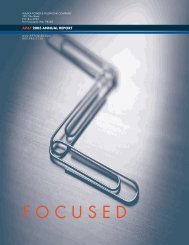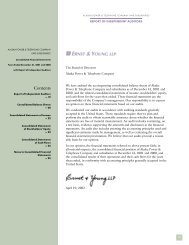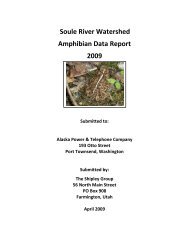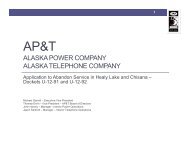Draft Study Plan Vol 1 (PDF) - Alaska Power and Telephone Company
Draft Study Plan Vol 1 (PDF) - Alaska Power and Telephone Company
Draft Study Plan Vol 1 (PDF) - Alaska Power and Telephone Company
You also want an ePaper? Increase the reach of your titles
YUMPU automatically turns print PDFs into web optimized ePapers that Google loves.
DRAFT DOCUMENT<br />
The following are the resource studies we propose to conduct in 2013:<br />
1. Cultural Resource Survey<br />
2. Complete any unfinished surveys from 2012<br />
<strong>Study</strong> Descriptions:<br />
1. Geotechnical Survey<br />
GLH will hire a qualified geology firm to evaluate the geology <strong>and</strong> dam design.<br />
Such studies would include geologic mapping in the dam <strong>and</strong> powerhouse areas,<br />
geophysical surveys of the powerhouse, spillway, <strong>and</strong> dam abutment areas, <strong>and</strong> office<br />
studies to provide preliminary design parameters for the project structures.<br />
Seismic Refraction: Seismic refraction studies will be conducted in 2012 to<br />
better define the bedrock surface in the dam <strong>and</strong> powerhouse locations. Seismic<br />
refraction studies involve: 1) placing a string of geophones along straight lines of interest,<br />
2) setting off small explosive charges at certain points along the line, 3) recording the<br />
time that the energy waves from the explosions reach each geophone, 4) measuring the<br />
elevations along the line at each geophone, <strong>and</strong> 5) analyzing the results to determine<br />
characteristics of the subsurface layers. A brief description of the mathematics involved<br />
<strong>and</strong> the location of charge placement is included in Appendix D; as well as the 2011<br />
Geotechnical Survey report.<br />
Each seismic line is generally a few hundred feet long, with 24 geophones<br />
uniformly spaced along the line (230 feet long with 10’ spacing, 345 feet long with 15’<br />
spacing, etc.). Each geophone consists of a metal probe about 6 inches long <strong>and</strong> a fistsized<br />
head. The probe is inserted into the ground so that it makes firm contact with soil<br />
or rock, which may require a small amount of digging in loose or peaty soils or where<br />
there are tree roots. Undergrowth is cleared as required along the line for ease of access.<br />
On average, a crew can complete 1-2 complete profiles each day.<br />
The explosive charges are generally 1/3 lb ANFO (ammonium nitrate fuel oil),<br />
but in some deep soil conditions 1 lb charges are used. All charges are h<strong>and</strong>led strictly in<br />
conformance with applicable state <strong>and</strong> Federal laws by certified technicians. Each line<br />
requires 5-7 separate shots (at each end of the line, the middle of the line, an off-end shot<br />
at each end, <strong>and</strong> possibly shots at the ¼ <strong>and</strong> ¾ points along the line). Each charge is set<br />
off in a hole 2-3 feet deep wedged into the ground, repacked with suitable soil material so<br />
that as much energy as possible is directed into the ground. Depending on the ground<br />
conditions <strong>and</strong> size of charges used, each shot disturbs a circular area from 1 to 5 feet in<br />
diameter, with the disturbance ranging from just a small hump in the ground to a shallow<br />
crater. In rocky or peaty soils, some material may be ejected up to 50 feet away from the<br />
shot location.<br />
The proposed studies for the Connelly Lake Project will include the 10 seismic<br />
refraction profiles listed below. Because of the expected shallow bedrock conditions, the<br />
Applicant expects that 1/3 lb charges will be used to minimize ground disturbance, with<br />
the possible exception of lines at the powerhouse location that may be on deep alluvial<br />
soils.<br />
<strong>Draft</strong> <strong>Study</strong> <strong>Plan</strong> – June 2012 p. 42 Connelly Lake Hydroelectric Project








